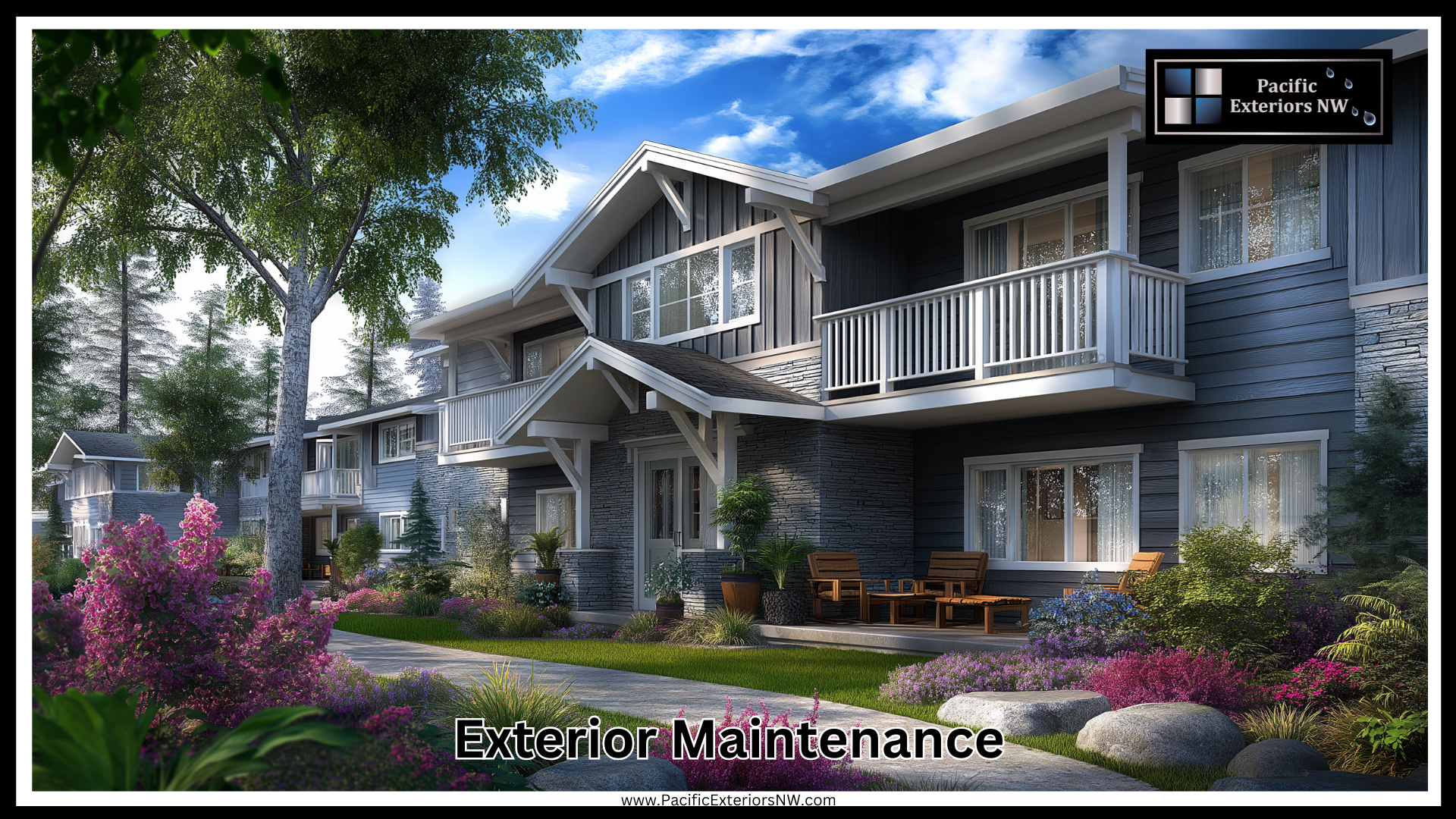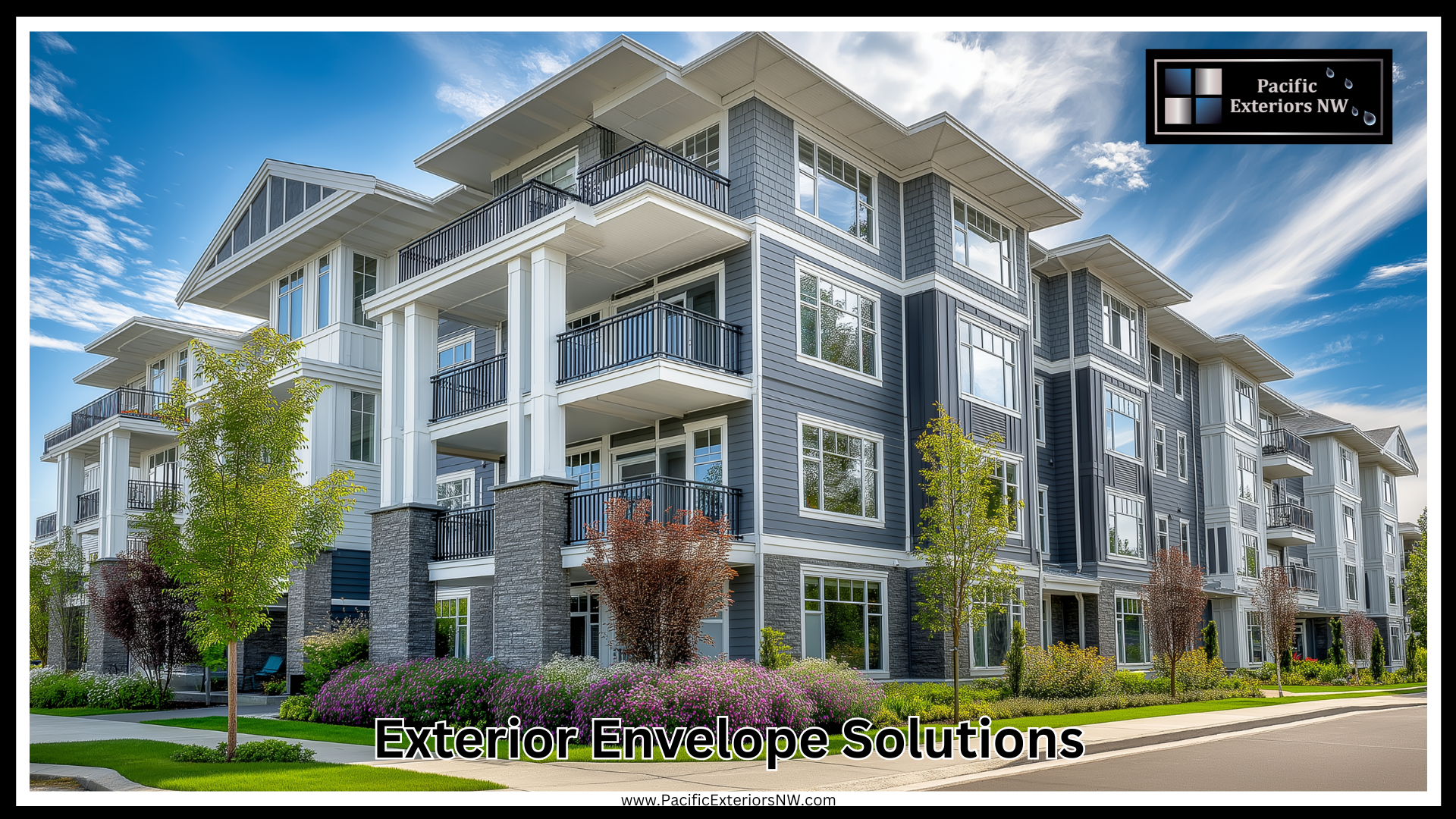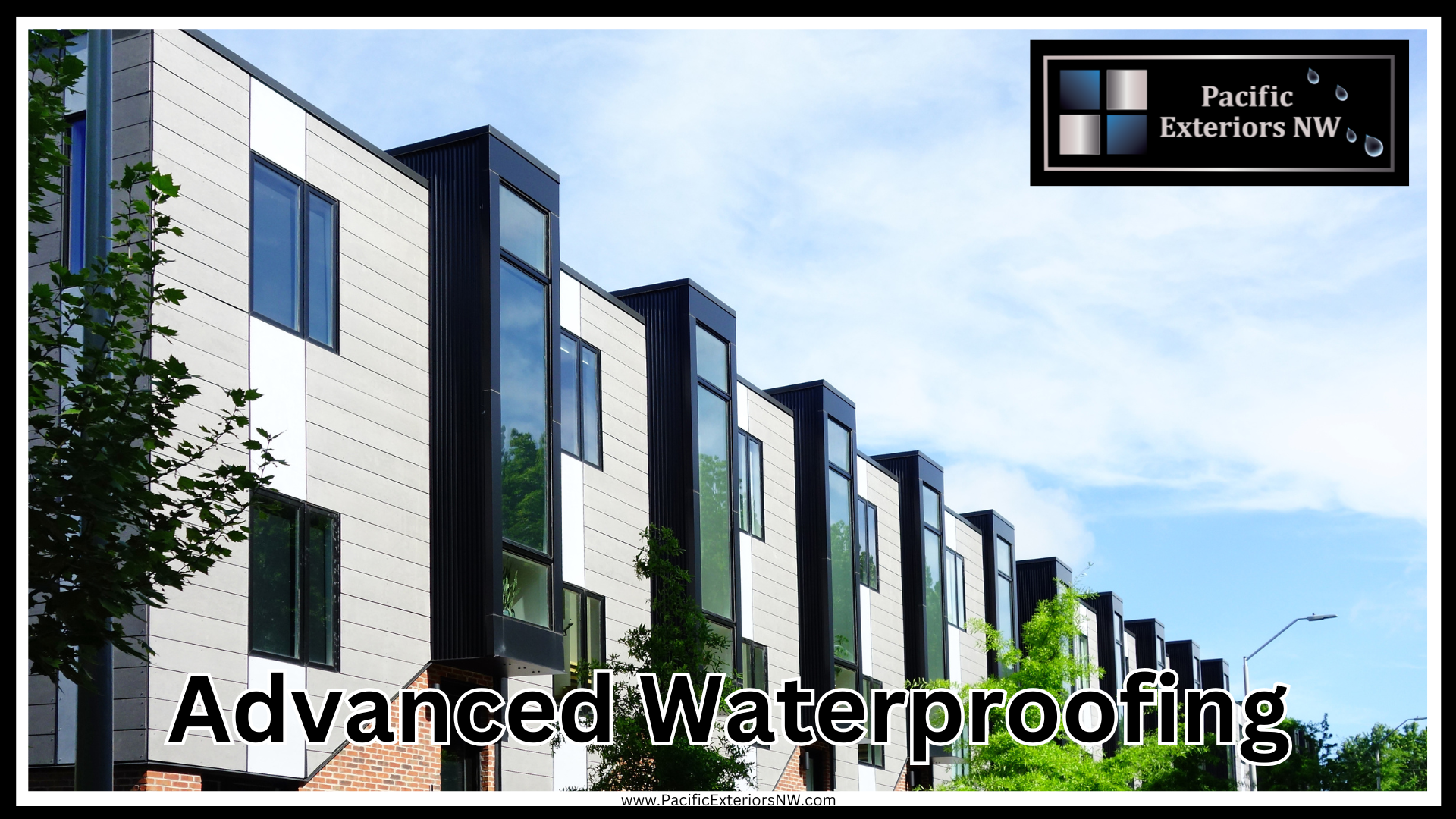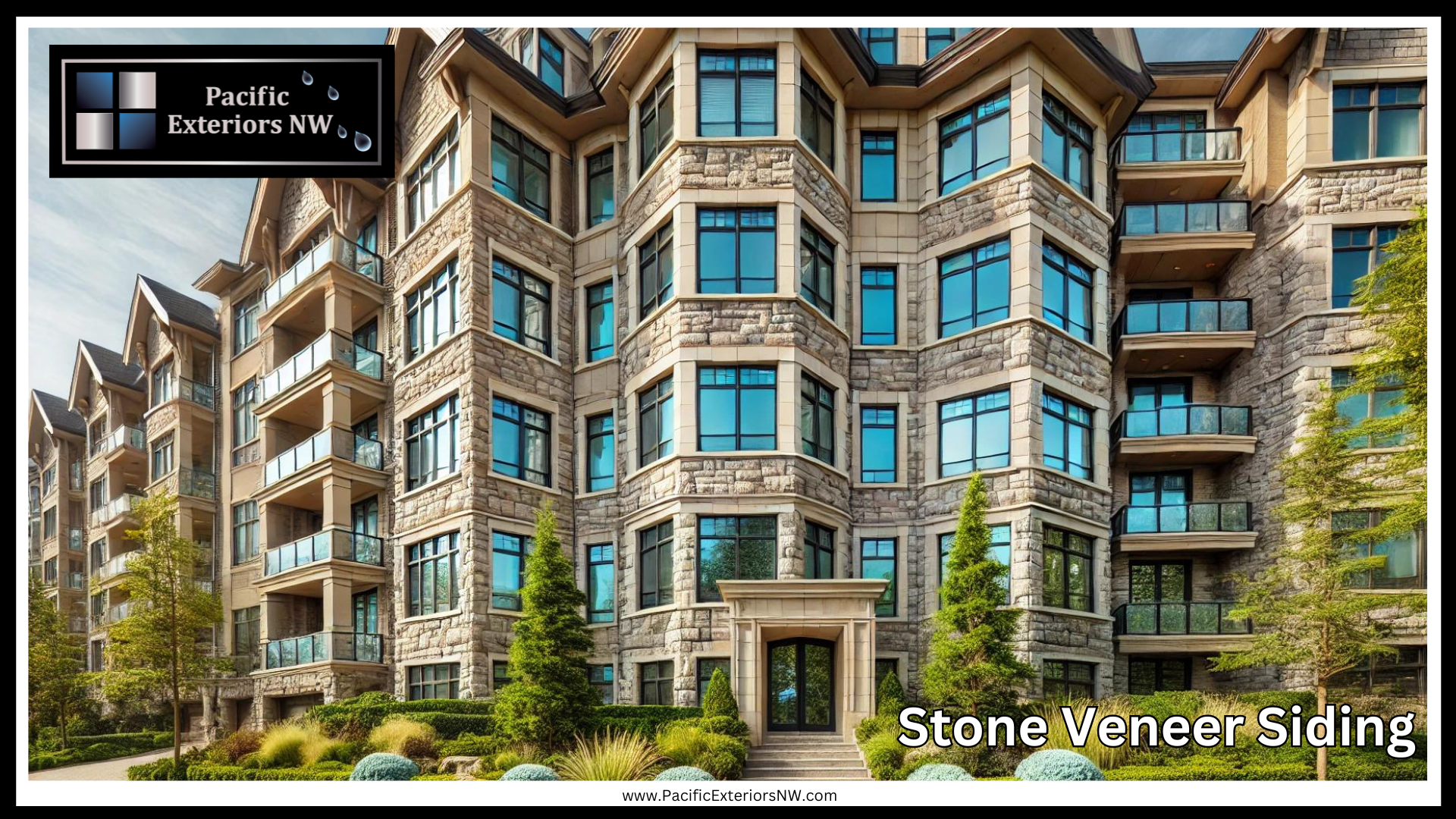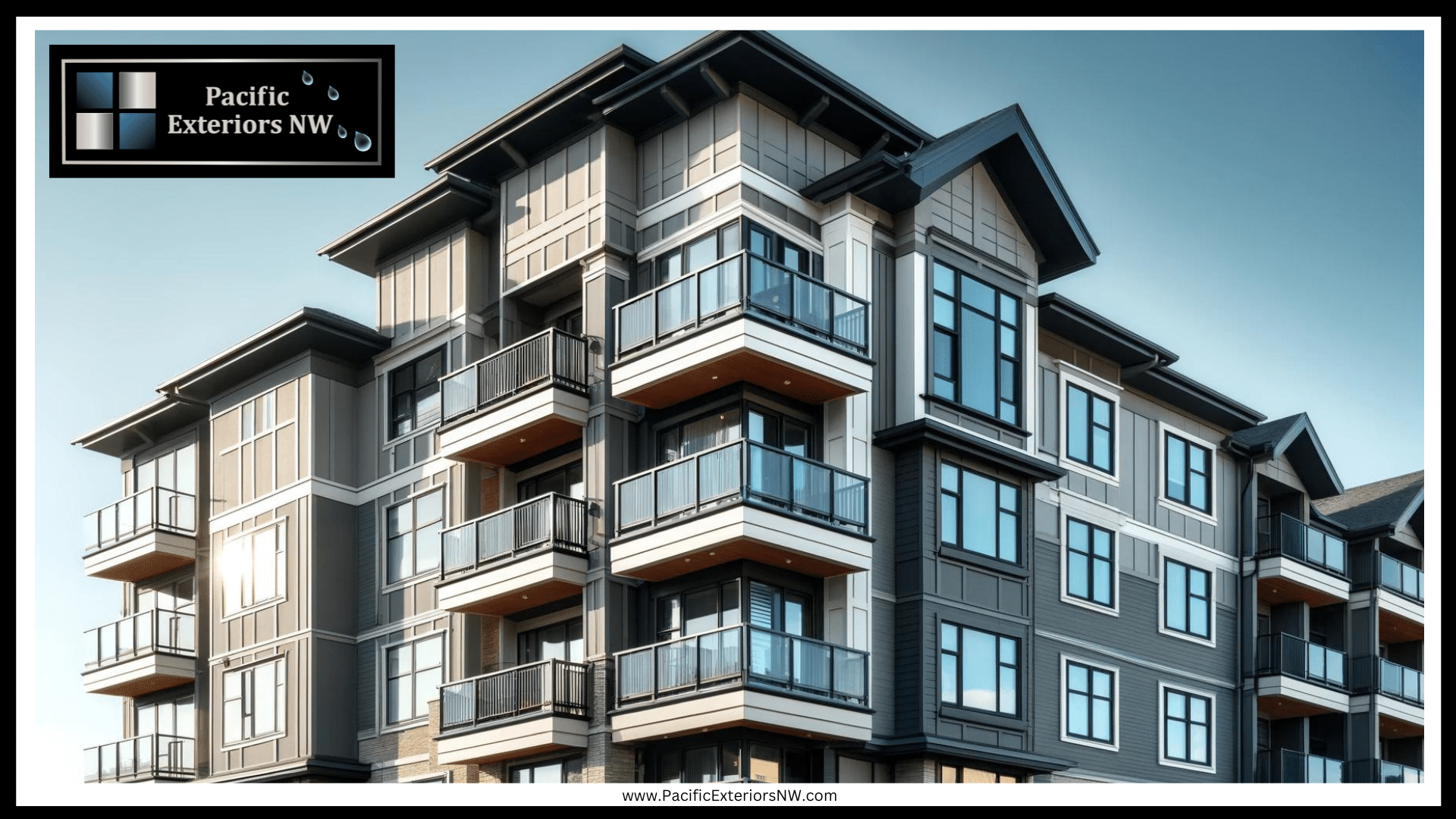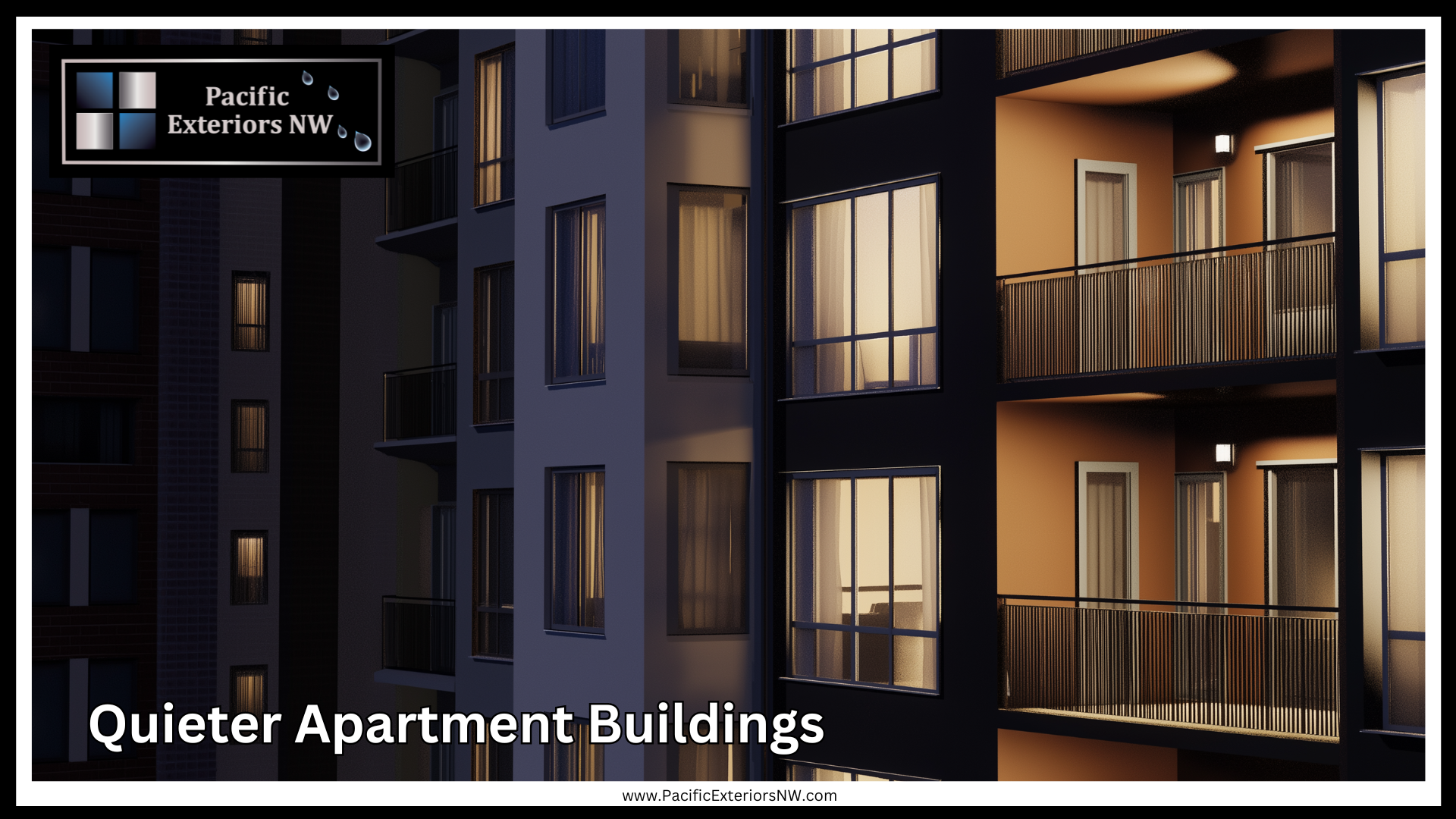
Noise pollution is a common issue in multifamily buildings like apartments and condos. From loud traffic outside to the clatter of neighboring units, noise can significantly impact your comfort and quality of life. The good news is that Pacific Exteriors NW offers targeted solutions to help reduce noise through smart upgrades to the building envelope—including windows, doors, siding, roofing, and insulation. These exterior features create a quieter, more peaceful living environment.
In this article, we’ll explore how upgrading these elements can dramatically reduce noise infiltration and improve the overall soundproofing of your multifamily building.
The Importance of a Quiet Multifamily Building
Creating a peaceful living environment in a multifamily building isn’t just about luxury—it’s essential for the health and well-being of residents. Excessive noise can lead to stress, poor sleep, and decreased productivity. Furthermore, noise complaints are common in apartment and condo buildings, making soundproofing a critical consideration for tenants and property owners.
Pacific Exteriors NW understands the vital role the building envelope—windows, doors, siding, roofing, and insulation—plays in noise reduction. By focusing on these key elements, we can significantly reduce the noise that enters your building, helping residents enjoy a quieter, more serene home.
Now, let’s dive into how each building envelope component can be optimized for sound reduction.
1. Windows: The Front Line in Noise Defense
Windows are often the largest weak point when it comes to noise intrusion. Standard single-pane windows provide minimal sound insulation, allowing external noise—such as traffic, construction, and city sounds—to penetrate the interior of your building. Upgrading to soundproof windows can make a dramatic difference in noise reduction.
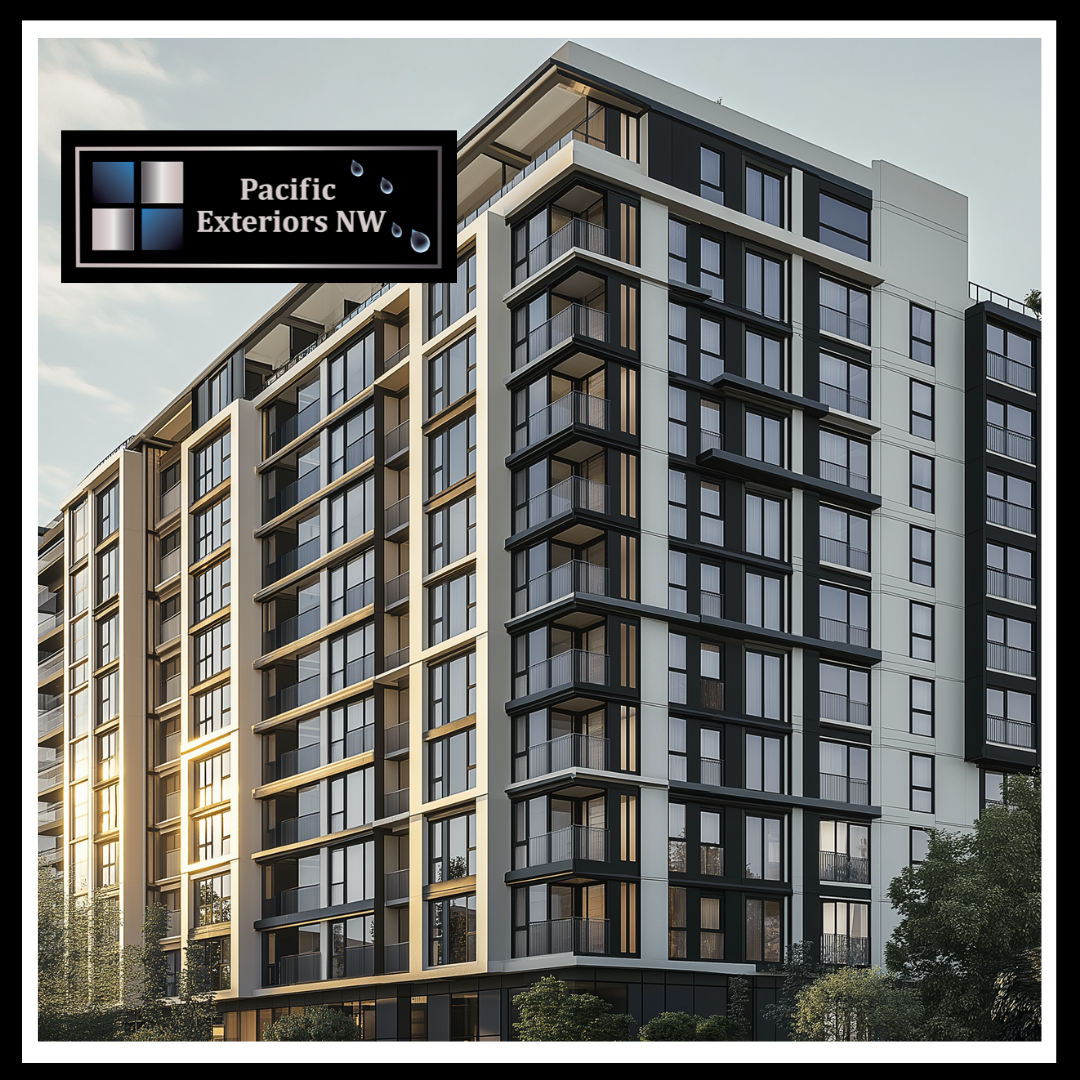
How Soundproof Windows Work:
- Double or Triple Glazing: Soundproof windows create multiple barriers for sound to pass through by adding extra layers of glass. Double—or triple-glazed windows are highly effective in reducing noise transmission.
- Laminated Glass: Laminated glass includes a special sound-dampening interlayer that absorbs sound vibrations, reducing noise penetration by up to 40 decibels.
- Gas-Filled Cavities: Some windows include argon or krypton gas between the panes, further enhancing noise reduction by disrupting sound waves.
At Pacific Exteriors NW, we recommend upgrading to energy-efficient, soundproof windows that block out noise and improve thermal insulation, making them a smart investment for multifamily buildings. Additionally, window frame materials like vinyl or fiberglass provide better sound insulation than metal frames, which can transmit vibrations more easily.
Did you know that even small gaps in window seals can allow up to 50% more noise to enter your home? Sealing these gaps properly during installation is crucial for maximizing soundproofing.
2. Soundproof Doors: Blocking Noise Before It Enters
While windows are often the first area people think of when it comes to noise reduction, doors play an equally important role. Standard hollow-core doors do little to block sound, allowing noise from hallways, stairwells, or neighboring units to travel easily into individual apartments or condos. Upgrading to soundproof doors is a simple yet effective way to enhance noise control.
Soundproof Door Features:
- Solid-Core Construction: Unlike hollow-core doors, solid-core doors are dense and heavy, making them far more effective at blocking sound. Their weight and thickness prevent sound waves from passing through.
- Acoustic Seals: Installing weatherstripping or acoustic seals around the edges of the door helps block the gaps where sound can leak through. This is essential for achieving optimal noise reduction.
- Enhanced Privacy: Soundproof doors block external noise and improve privacy within a unit, especially between rooms like bedrooms and living areas.
At Pacific Exteriors NW, we often recommend pairing solid-core doors with acoustic door seals to maximize noise reduction. This combination is especially important in multifamily buildings where high foot traffic in hallways can easily disrupt the peace and quiet of adjacent units.
3. Siding Solutions: Enhancing Noise Reduction from the Outside
Siding may not be the first thing that comes to mind when you think of soundproofing, but it plays a significant role in protecting your building from external noise. The type of siding you choose can help block or amplify the sound from outside. High-quality, well-insulated siding is essential for controlling the amount of noise that enters the building through the walls.
Soundproof Siding Options:
- Fiber Cement Siding: Known for its durability and strength, fiber cement siding offers excellent noise reduction properties. Its dense, layered construction helps block sound transmission while also providing resistance to weather and fire.
- Insulated Vinyl Siding: Insulated vinyl siding includes a foam insulation layer acting as a sound barrier. This extra insulation blocks noise and improves energy efficiency by reducing heat transfer through the walls.
- Wood Siding: Wood is a natural sound absorber and can be an effective siding material for reducing noise. However, wood requires more maintenance and isn’t as fire-resistant as other materials.
At Pacific Exteriors NW, we install top-of-the-line siding options to enhance your building’s exterior and provide superior soundproofing. Insulated siding, in particular, is a great choice for multifamily buildings, as it offers both acoustic and thermal benefits.
4. Roofing Systems: Soundproofing from Above
Roofing is another critical component of the building envelope that impacts sound transmission. In multifamily buildings, particularly those in noisy urban environments or near airports, roofing materials, and insulation play a major role in reducing airborne noise from outside sources, such as rain, hail, or even airplanes.
Soundproof Roofing Materials:
- Asphalt Shingles: Asphalt roofing shingles are one of the most common roofing materials in residential buildings. While they offer moderate soundproofing, installing them with added insulation can enhance their noise-reduction capabilities.
- Metal Roofing with Insulation: Metal roofing can be noisier than other materials, especially during rain or hail. However, when combined with quality underlayment and insulation, metal roofing can provide excellent soundproofing while being long-lasting and energy-efficient.
- Rubber Roofing Membranes: Rubber membranes are a great soundproofing option for flat or low-slope roofs. They are designed to absorb sound, making them ideal for multifamily buildings in noisy areas.
At Pacific Exteriors NW, we specialize in installing roofing systems that prioritize durability and soundproofing. Adding layers of high-quality insulation beneath the roofing materials can create a barrier that significantly reduces noise transmission from the roof into the living spaces below.
5. Insulation: The Key to a Quiet, Comfortable Building
Insulation is perhaps the most versatile and important component of the building envelope when it comes to noise reduction. Whether it blocks airborne noise (like voices and music) or reduces impact noise (like footsteps and furniture movement), the right insulation can make a huge difference in how sound travels within a multifamily building.
Types of Insulation for Noise Reduction:
- Fiberglass Insulation: Fiberglass batts are widely used in walls and ceilings to absorb sound. They are affordable, easy to install, and provide good acoustic performance, especially when used in combination with other soundproofing materials.
- Spray Foam Insulation: Spray foam expands to fill cracks and gaps, creating a nearly airtight seal that blocks both sound and air. This is particularly effective for hard-to-reach areas or buildings that need additional soundproofing for walls and ceilings.
- Mineral Wool Insulation: Made from volcanic rock or recycled materials, mineral wool is denser than fiberglass, making it better at absorbing sound. It’s also fire-resistant, which adds an extra layer of protection to multifamily buildings.
At Pacific Exteriors NW, we ensure that all insulation is installed properly to maximize its soundproofing capabilities. By focusing on both exterior walls and interior spaces, we create multifamily buildings that offer residents the peace and quiet they desire.
The Importance of a Comprehensive Building Envelope
Focusing on just one area isn’t enough when it comes to noise reduction in multifamily buildings. A well-designed building envelope—consisting of windows, doors, siding, roofing, and insulation—works together to create a soundproof barrier that keeps external and internal noise out.
At Pacific Exteriors NW, we understand the importance of treating the building envelope as a whole system. Each element plays a critical role, and when properly designed and installed, these features can significantly improve noise reduction, energy efficiency, and overall comfort for residents.
Silence Starts with Smart Exterior Choices
Reducing noise in multifamily buildings starts from the outside. Whether upgrading to soundproof windows, installing insulated siding, reinforcing your roof with acoustic materials, or adding high-quality insulation, Pacific Exteriors NW can help you create a quieter, more enjoyable living space for your tenants or homeowners.
By taking a comprehensive approach to the building envelope, you’ll enhance the value of your property and improve the quality of life for everyone who lives there. Contact us today to learn more about how we can help soundproof your multifamily building.
FAQs
Q: Can upgrading windows and doors really make a difference in noise reduction?
A: Yes! Upgrading to soundproof windows and solid-core doors can significantly reduce the amount of noise entering or exiting your building.
Q: How does insulation help with noise reduction in multifamily buildings?
A: Insulation absorbs sound and prevents it from traveling between walls, floors, and ceilings. Proper insulation can block both airborne and impact noise.
Q: What type of siding is best for reducing noise?
A: Insulated siding, such as fiber cement, is highly effective at reducing noise and improving energy efficiency.
By focusing on windows, doors, siding, roofing, and insulation, Pacific Exteriors NW can help you achieve the peace and quiet your residents deserve!



